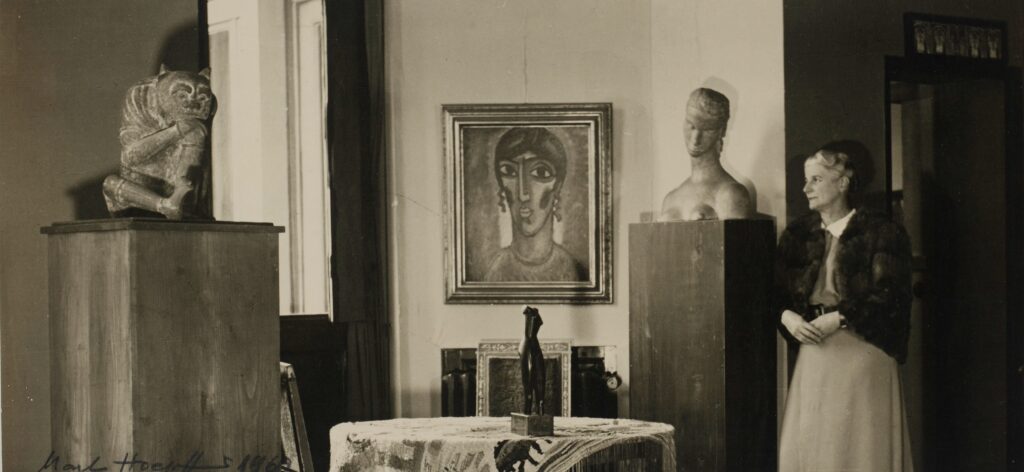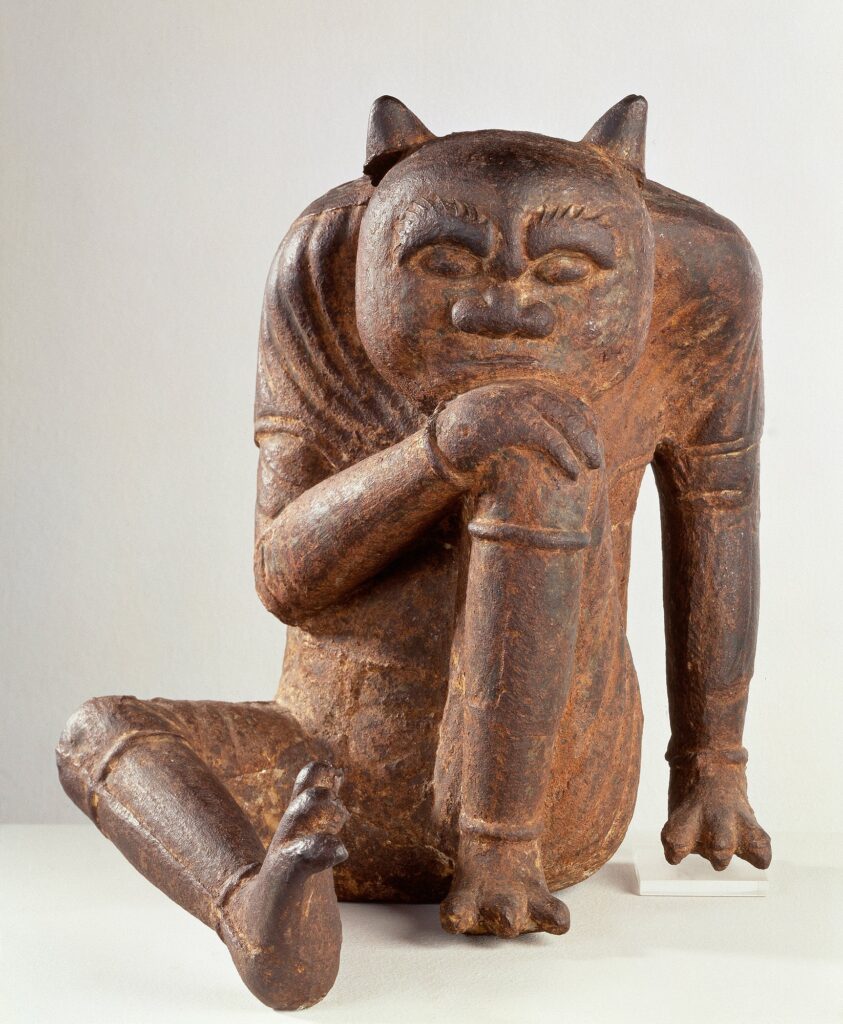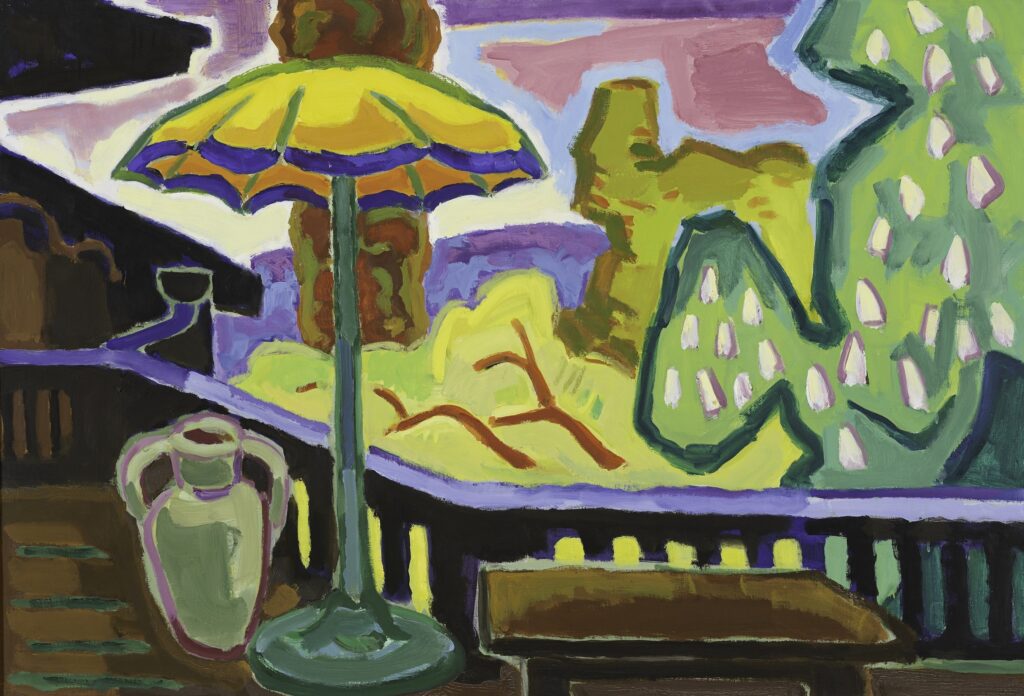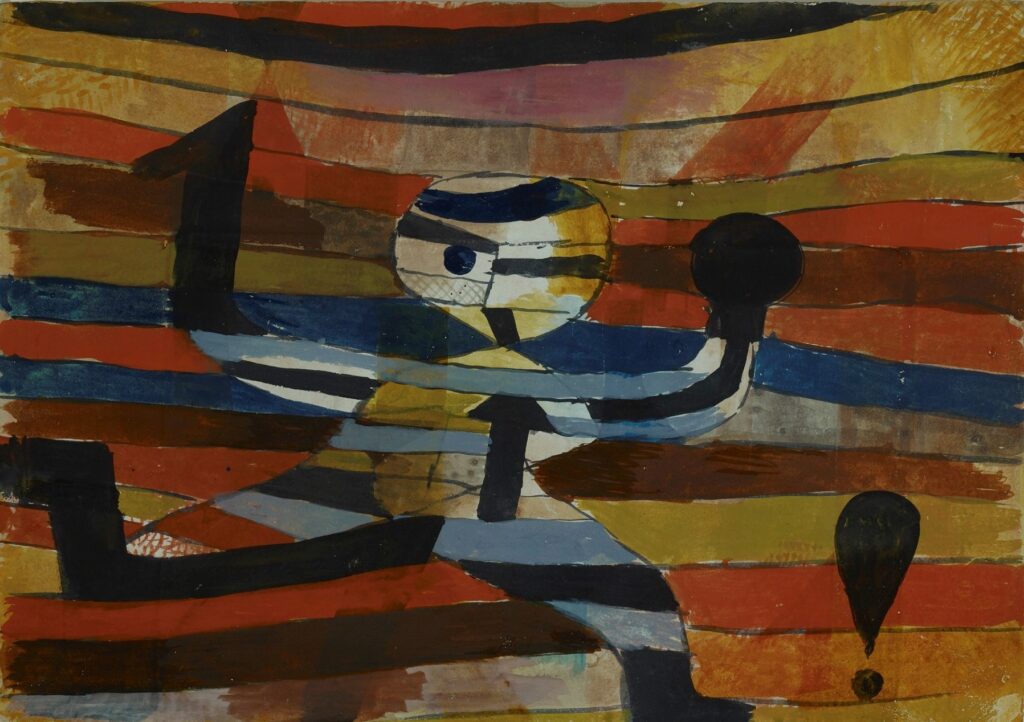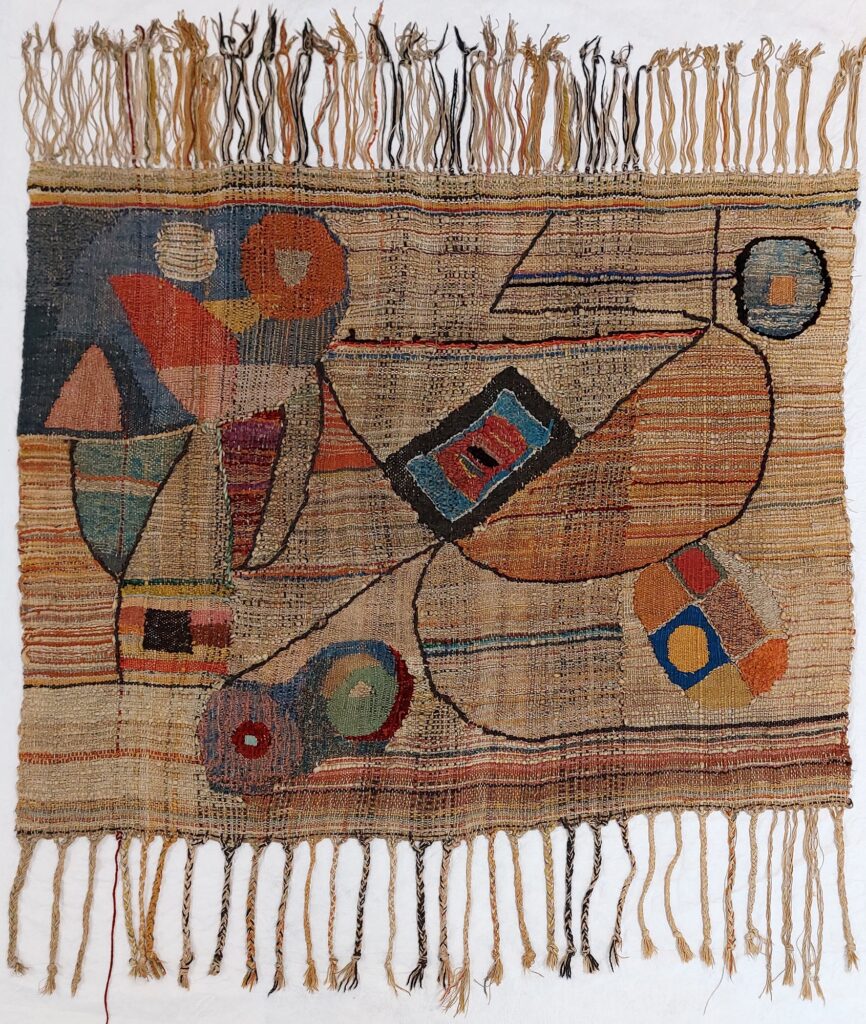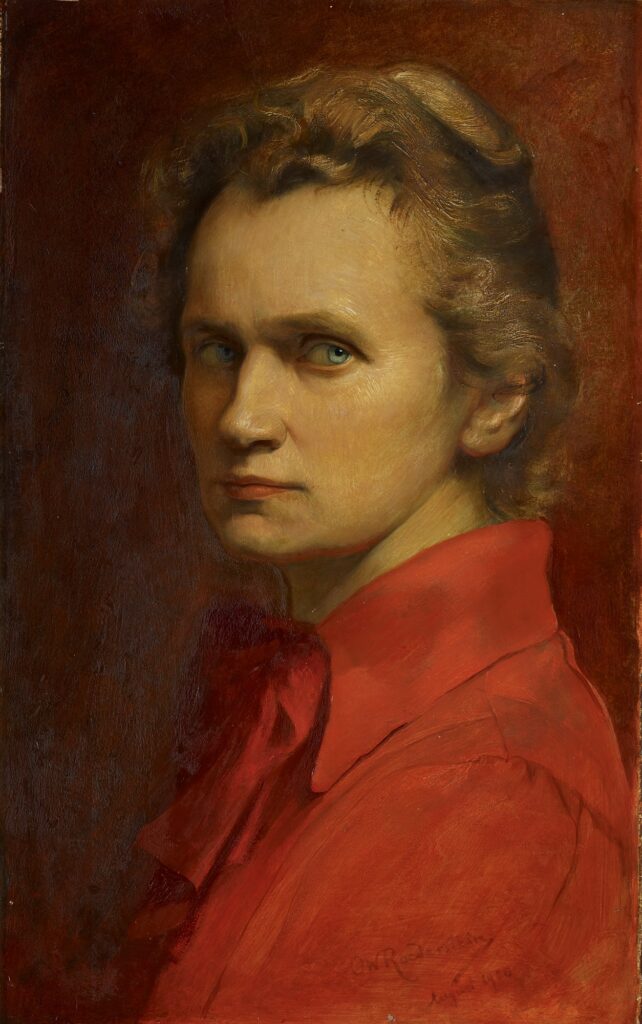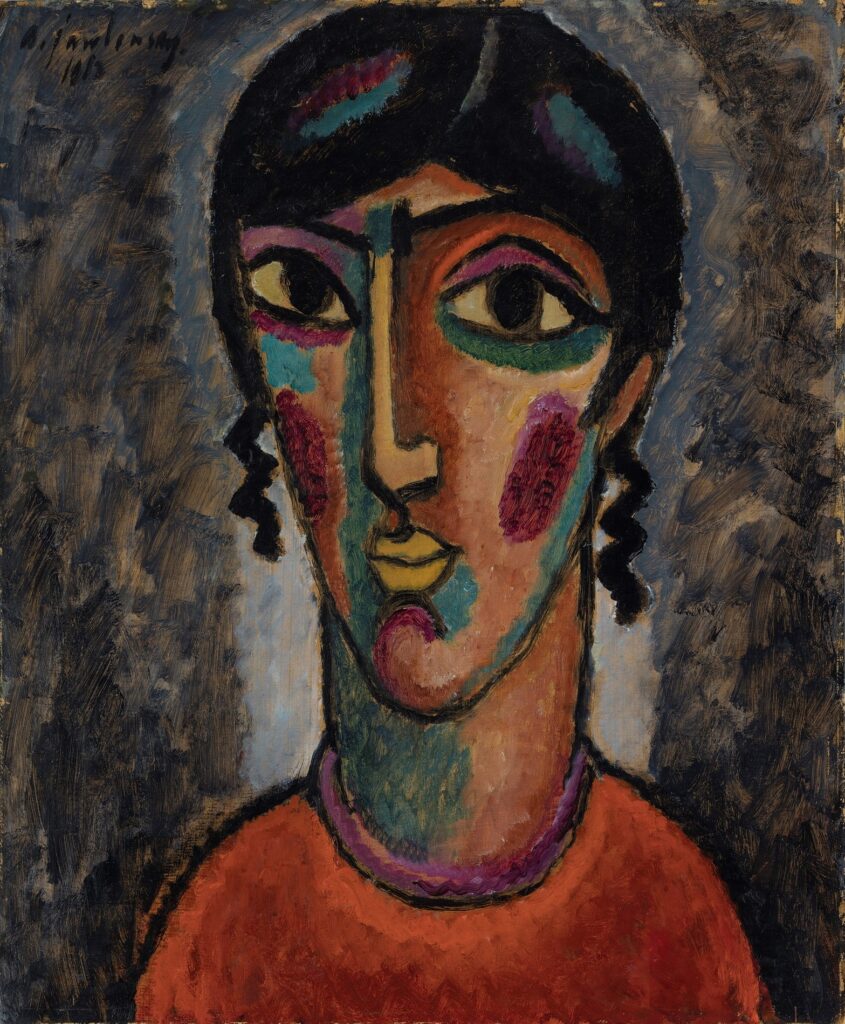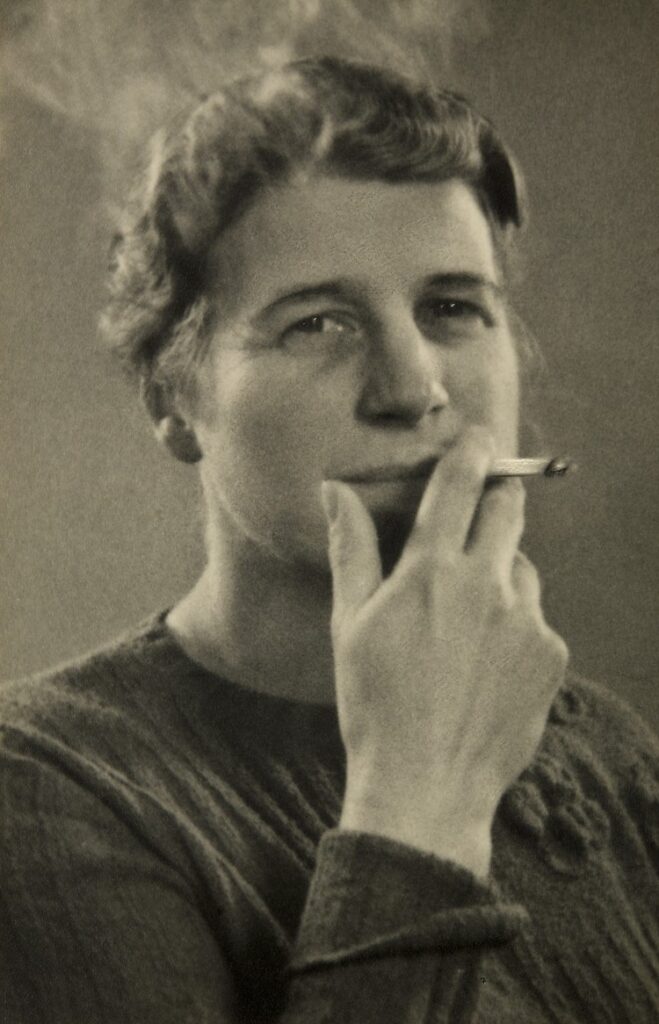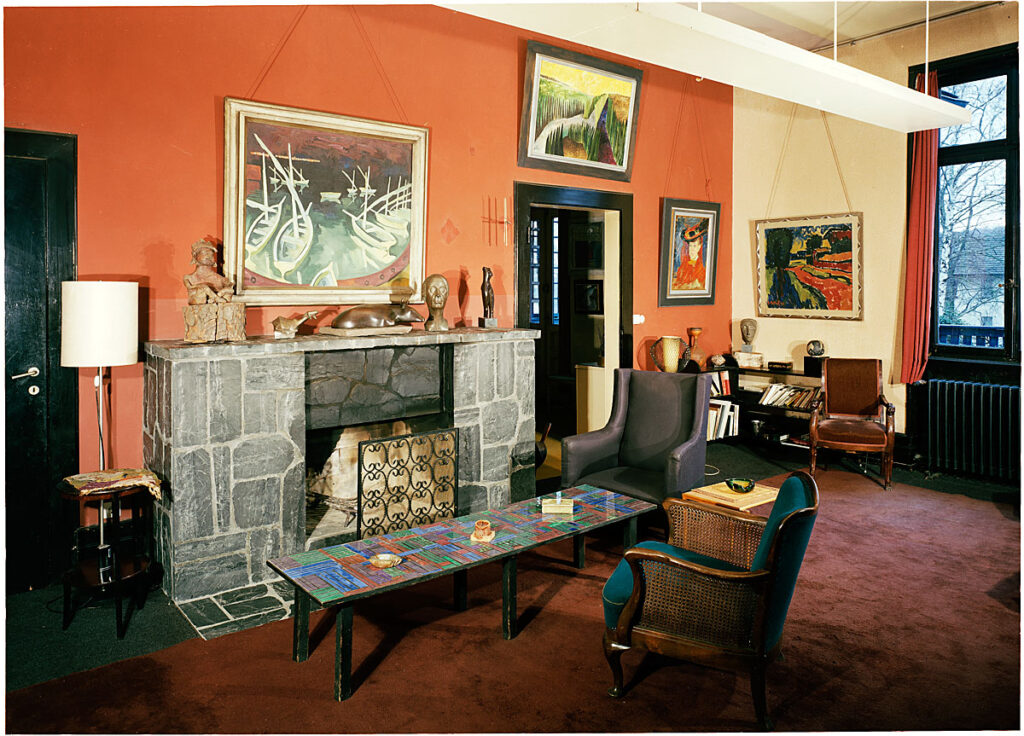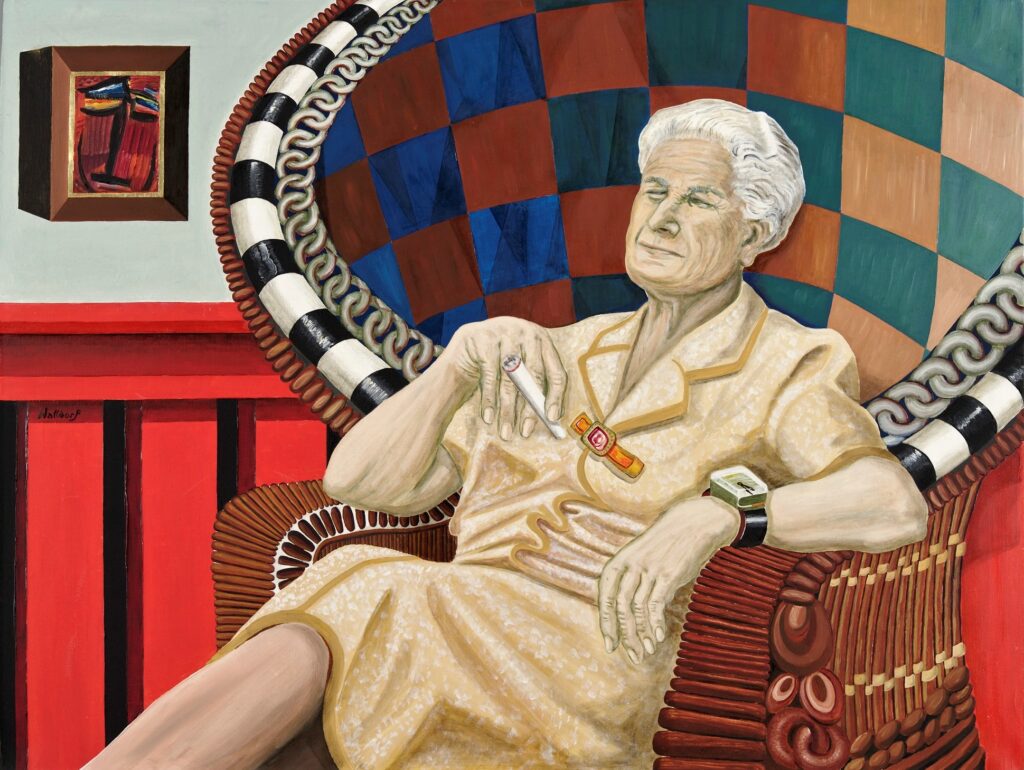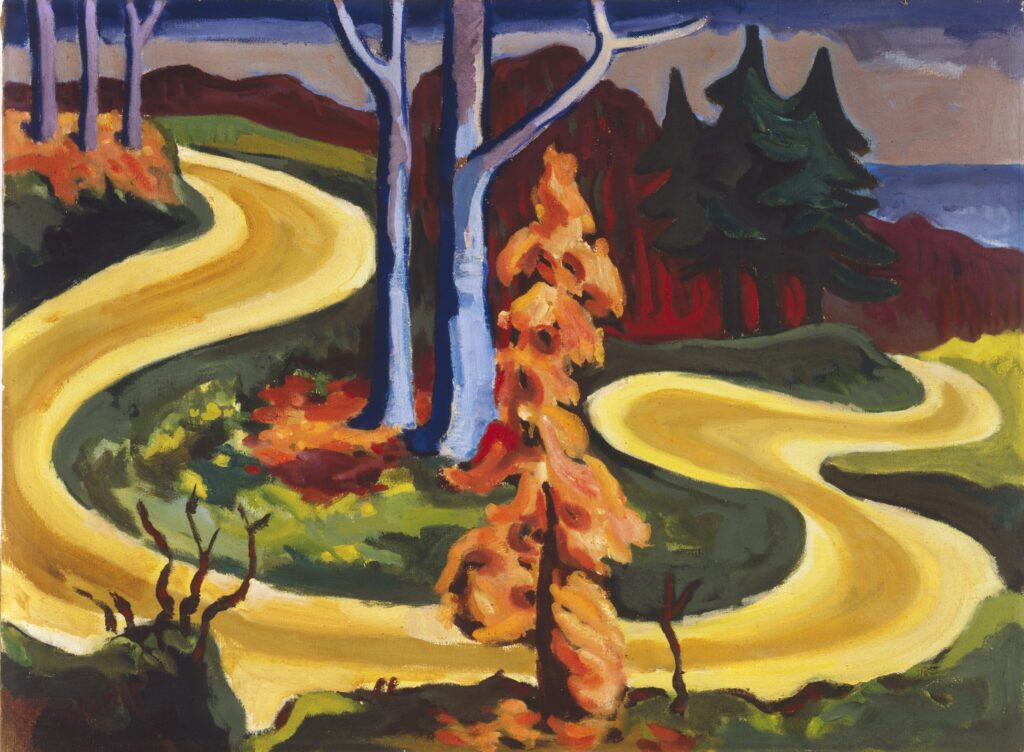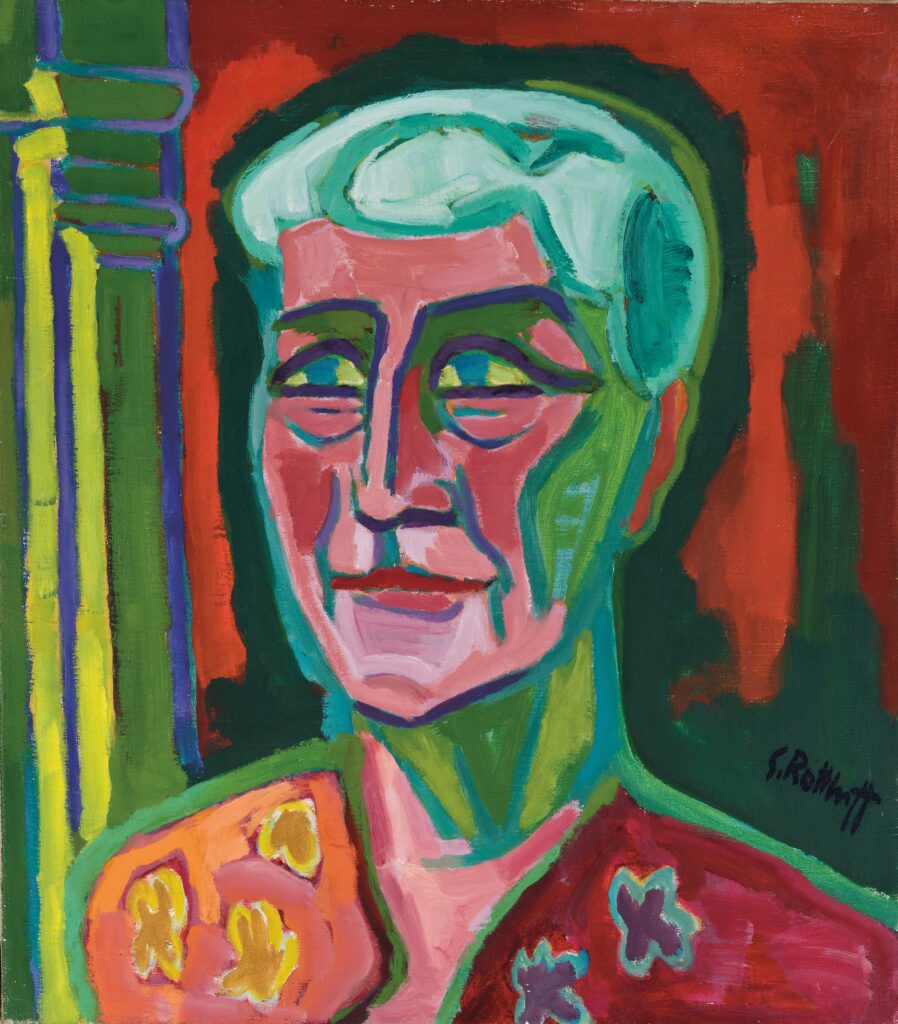Hanna Bekker vom Rath
A Rebel for Modern Art
The exhibition presents one of the most committed women collectors and art dealers of the post-war period in Germany. It tells the story of the Expressionist networks of the 1920s to 1940s and the post-war art trade from a different, female perspective.
Hanna Bekker vom Rath (1893–1983) was an unusual character. Born into an upper-middle-class family in Frankfurt am Main, she married the music critic Paul Bekker in 1920, became the mother of three children, and at various times in her life opted for an unconventional lifestyle. She aspired to a life as an independent and emancipated woman. The so-called Blue House in the small town of Hofheim am Taunus (near Frankfurt am Main) became the centre of her life and work. Here she began to paint and took lessons from other women artists such as Ottilie W. Roederstein and Ida Kerkovius. The Blue House was an open and hospitable refuge for the visual arts and artists, but music and literature also found support and debate there.
Hanna Bekker began collecting at an early age. Her first acquisitions in the 1920s included important works by Wilhelm Lehmbruck and Alexander Archipenko. Her acquaintance with artists such as Alexej von Jawlensky, whom she met in Wiesbaden in 1926, became particularly important. Hanna Bekker soon discovered a new mission in life: the mediation of art. Her encounter with Karl Schmidt-Rottluff, in particular, became a lifelong friendship. From 1932, he visited her regularly in Hofheim, as countless paintings and watercolours testify. Hanna Bekker vom Rath also supported »her« artists during the difficult times of National Socialism, when many of
them were banned from working. From 1940 to 1943, for example, she organised »secret« exhibitions in her Berlin flat.
Immediately after the Second World War, the patron founded a gallery, the Frankfurter Kunstkabinett Hanna Bekker vom Rath. It opened in 1947 with an exhibition dedicated to Käthe Kollwitz and quickly became a meeting place for the post-war art scene. Renowned artists such as Adolf Hölzl, Willi Baumeister, and Ernst Wilhelm Nay were represented, as were painters of a younger generation such as HAP Grieshaber and Kurt Federlin. Women artists such as Emy Roeder, Ida Kerkovius, and Louise Stomps were also part of the gallery’s regular programme. From the 1950s onwards, she began to travel extensively on her own behalf, becoming an important ambassador for modern art from Germany with her self-organised suitcase exhibitions. The exhibition follows this biography in thematic chapters. The exhibition of around 100 works is curated by Dr Sabine Maria Schmidt and Marian Stein-Steinfeld (Hanna Bekker vom Rath Archive). A comprehensive catalogue with numerous texts
and illustrations has been published by Hirmer Verlag (museum edition: 29.90 euros). The exhibition was organised in close collaboration with the Brücke-Museum in Berlin.
With works by: Alexander Archipenko, Willi Baumeister, Max Beckmann, Lyonel Feininger, Erich Heckel, Alexej von Jawlensky, Wassily Kandinsky, Ida Kerkovius, Ernst Ludwig Kirchner, Paul Klee, Käthe Kollwitz, Wilhelm Lehmbruck, August Macke, Ernst Wilhelm Nay, Emil Nolde, Emy Roeder, Ottilie W. Roederstein,
Christian Rohlfs, Karl Schmidt-Rottluff, Kurt Schwitters, Louise Stomps, and others.
In cooperation with

Gallery
Dates Hanna Bekker vom Rath
-
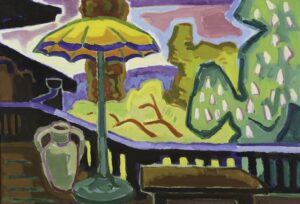 Public guided tour 28. July 2024
Public guided tour 28. July 2024
14:30 UhrHanna Bekker vom Rath
Kunstsammlungen am TheaterplatzWir bieten jeden Sonntag öffentliche Führungen zu der aktuellen Ausstellung Hanna Bekker vom Rath an. Lernen Sie bei einem gemeinsamen Rundgang eine der engagiertesten Sammlerinnen und Kunsthändlerinnen der Nachkriegszeit sowie die expressionistischen Werke der Künstler:innen kennen, die sie durch ihre Ankäufe förderte.
Download Event -
 Familienführung 4. August 2024
Familienführung 4. August 2024
14:30 UhrHanna Bekker vom Rath
Kunstsammlungen am TheaterplatzGemeinsam erkunden wir auf spielerische Art die Ausstellung Hanna Bekker vom Rath. Im Anschluss gestalten wir eigene kleine Kunstwerke zum Mitnehmen.
Download Event -
 Workshop 7. August 2024
Workshop 7. August 2024
17:00 UhrMitmachmittwoch
Kunstsammlungen am TheaterplatzOffener Workshop zur Ausstellung Hanna Bekker vom Rath in den Kunstsammlungen am Theaterplatz
Download Event -
 Public guided tour 11. August 2024
Public guided tour 11. August 2024
14:30 UhrHanna Bekker vom Rath
Kunstsammlungen am TheaterplatzWir bieten jeden Sonntag öffentliche Führungen zu der aktuellen Ausstellung Hanna Bekker vom Rath an. Lernen Sie bei einem gemeinsamen Rundgang eine der engagiertesten Sammlerinnen und Kunsthändlerinnen der Nachkriegszeit sowie die expressionistischen Werke der Künstler:innen kennen, die sie durch ihre Ankäufe förderte.
Download Event -
 Public guided tour 18. August 2024
Public guided tour 18. August 2024
14:30 UhrHanna Bekker vom Rath
Kunstsammlungen am TheaterplatzWir bieten jeden Sonntag öffentliche Führungen zu der aktuellen Ausstellung Hanna Bekker vom Rath an. Lernen Sie bei einem gemeinsamen Rundgang eine der engagiertesten Sammlerinnen und Kunsthändlerinnen der Nachkriegszeit sowie die expressionistischen Werke der Künstler:innen kennen, die sie durch ihre Ankäufe förderte.
Download Event -
 Public guided tour 21. August 2024
Public guided tour 21. August 2024
18:30 UhrPublic guided tour
Kunstsammlungen am TheaterplatzWe cordially invite you to the public guided tour in English on Wednesday, 21 August, 2024 at 6:30 pm at the Kunstsammlungen am Theaterplatz. The guided tour will take place in the exhibition Hanna Bekker vom Rath.
Download Event -
 Public guided tour 25. August 2024
Public guided tour 25. August 2024
14:30 UhrHanna Bekker vom Rath
Kunstsammlungen am TheaterplatzWir bieten jeden Sonntag öffentliche Führungen zu der aktuellen Ausstellung Hanna Bekker vom Rath an. Lernen Sie bei einem gemeinsamen Rundgang eine der engagiertesten Sammlerinnen und Kunsthändlerinnen der Nachkriegszeit sowie die expressionistischen Werke der Künstler:innen kennen, die sie durch ihre Ankäufe förderte.
Download Event -
 Im Gespräch 28. August 2024
Im Gespräch 28. August 2024
18:30 UhrHanna Bekker vom Rath
Kunstsammlungen am TheaterplatzWie die Bilder ins Museum kamen – Hanna Bekker zwischen Frankfurt am Main und Wiesbaden
Download Event -
 Public guided tour 1. September 2024
Public guided tour 1. September 2024
14:30 UhrHanna Bekker vom Rath
Kunstsammlungen am TheaterplatzWir bieten jeden Sonntag öffentliche Führungen zu der aktuellen Ausstellung Hanna Bekker vom Rath an. Lernen Sie bei einem gemeinsamen Rundgang eine der engagiertesten Sammlerinnen und Kunsthändlerinnen der Nachkriegszeit sowie die expressionistischen Werke der Künstler:innen kennen, die sie durch ihre Ankäufe förderte.
Download Event -
 Workshop 4. September 2024
Workshop 4. September 2024
17:00 UhrMitmachmittwoch
Kunstsammlungen am TheaterplatzOffener Workshop zur Ausstellung Hanna Bekker vom Rath in den Kunstsammlungen am Theaterplatz
Download Event -
 Familienführung 8. September 2024
Familienführung 8. September 2024
14:30 UhrHanna Bekker vom Rath
Kunstsammlungen am TheaterplatzGemeinsam erkunden wir auf spielerische Art die Ausstellung Hanna Bekker vom Rath. Im Anschluss gestalten wir eigene kleine Kunstwerke zum Mitnehmen.
Download Event -
 Reading 15. September 2024
Reading 15. September 2024
14:30 UhrHanna Bekker vom Rath
Kunstsammlungen am TheaterplatzLiterarischer Salon mit Stefan Hornbach, Literaturstipendiat der Stadt Chemnitz
Download Event -
 Kuratorenführung 25. September 2024
Kuratorenführung 25. September 2024
18:15 UhrHanna Bekker vom Rath
Kunstsammlungen am TheaterplatzKuratorinnenführung durch die Ausstellung Hanna Bekker vom Rath mit Dr. Sabine Maria Schmidt, Kunstsammlungen Chemnitz
Download Event -
 Workshop 2. October 2024
Workshop 2. October 2024
17:00 UhrMitmachmittwoch
Kunstsammlungen am TheaterplatzOffener Workshop zur Ausstellung Hanna Bekker vom Rath in den Kunstsammlungen am Theaterplatz
Download Event -
 Familienführung 6. October 2024
Familienführung 6. October 2024
14:30 UhrHanna Bekker vom Rath
Kunstsammlungen am TheaterplatzGemeinsam erkunden wir auf spielerische Art die Ausstellung Hanna Bekker vom Rath. Im Anschluss gestalten wir eigene kleine Kunstwerke zum Mitnehmen.
Download Event -
 Im Gespräch und Vortrag 20. October 2024
Im Gespräch und Vortrag 20. October 2024
14:30 UhrHanna Bekker vom Rath
Kunstsammlungen am TheaterplatzHanna Bekker vom Rath – eine Netzwerkerin Vortrag und Gespräch mit Marian Stein-Steinfeld, Gründerin und Leiterin des Archivs Hanna Bekker vom Rath, Frankfurt am Main
Download Event


